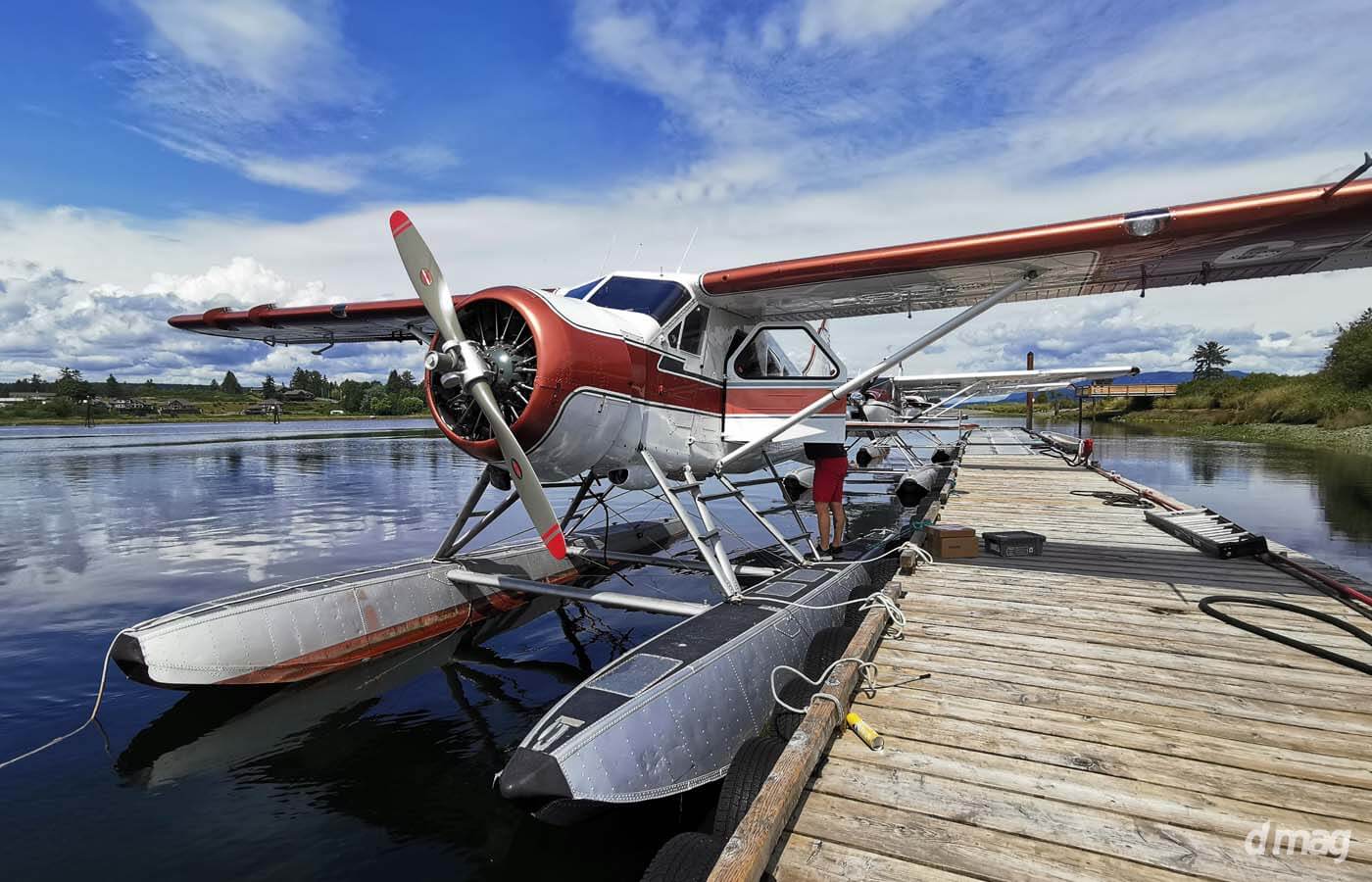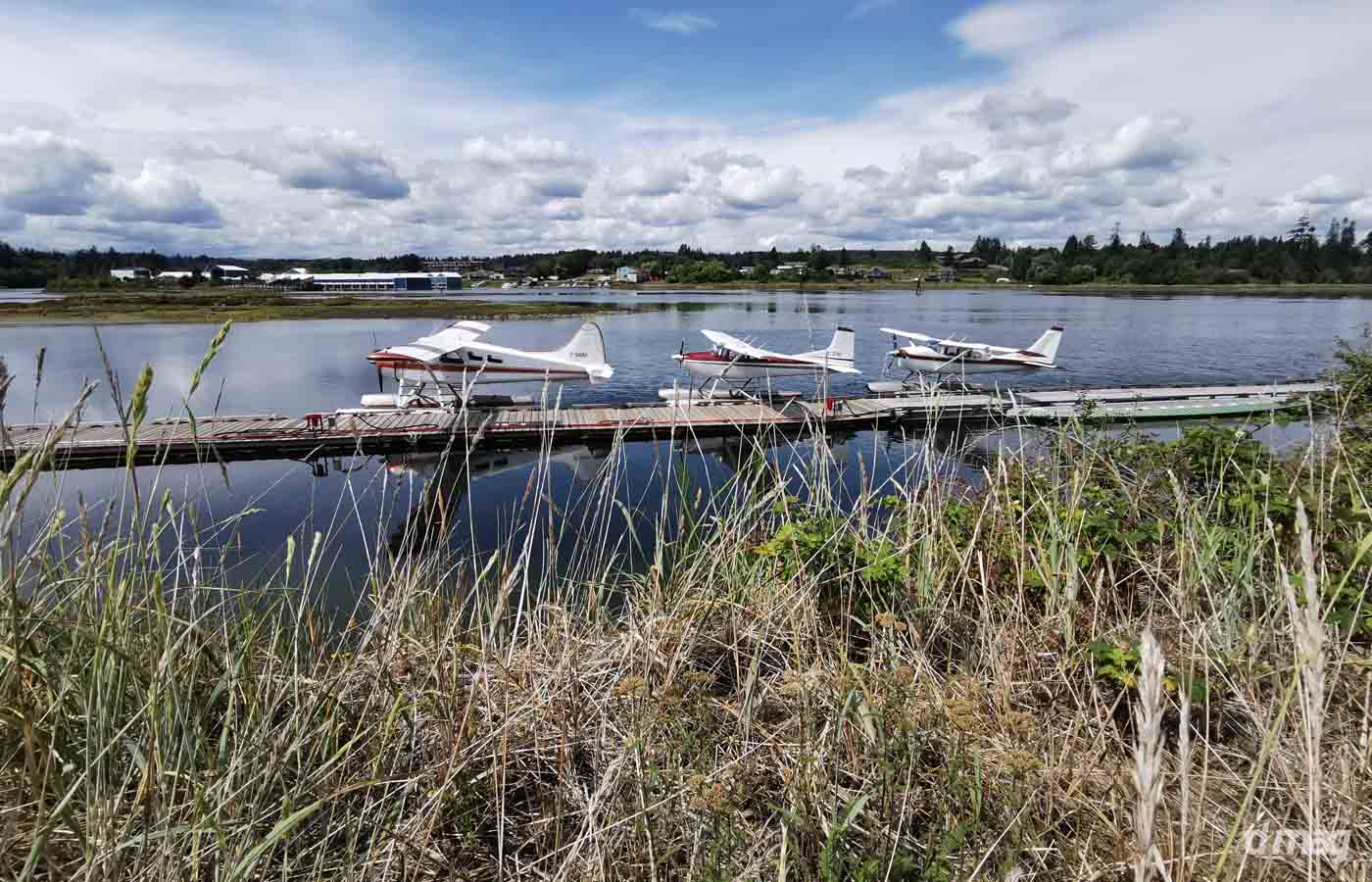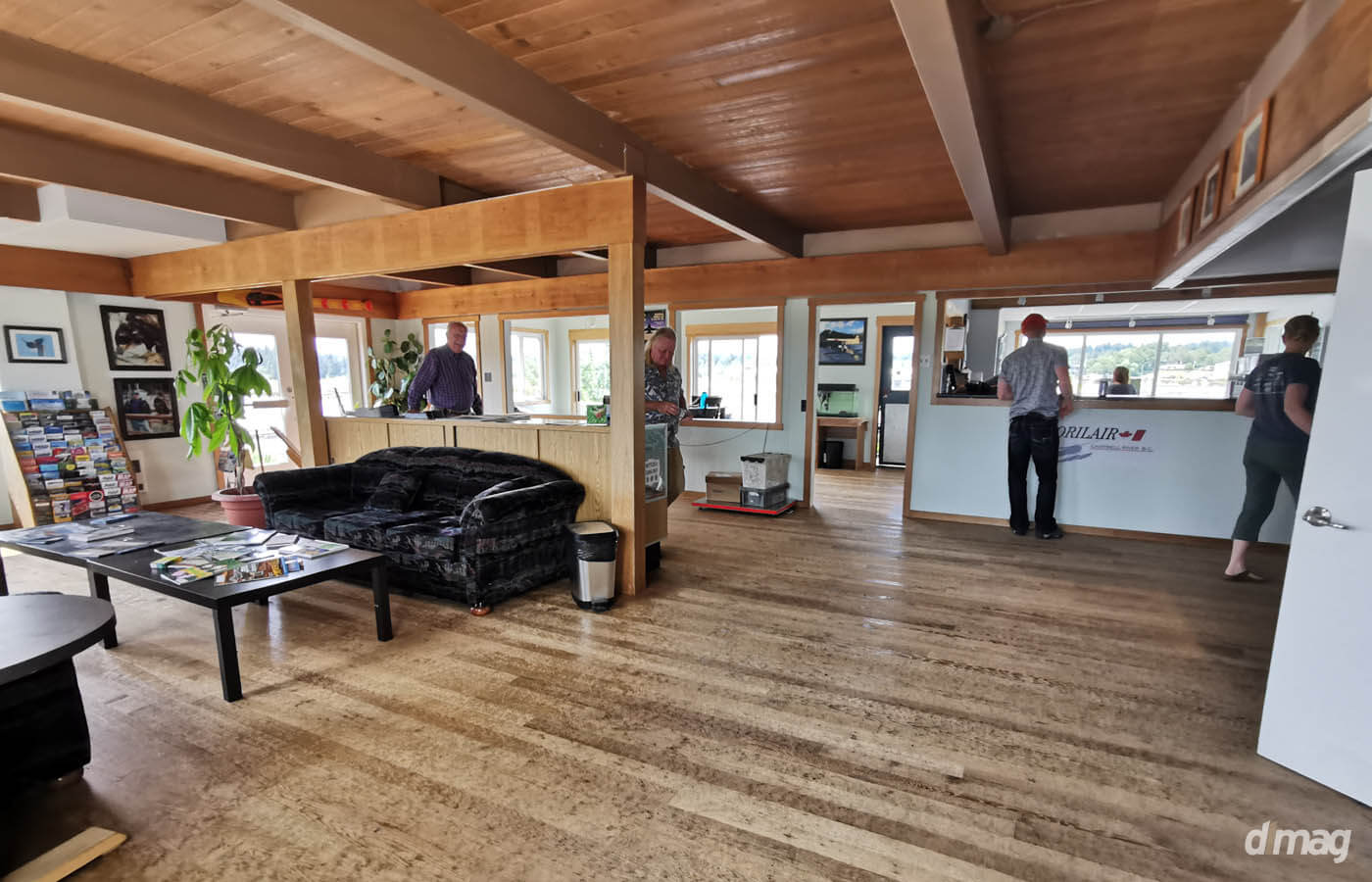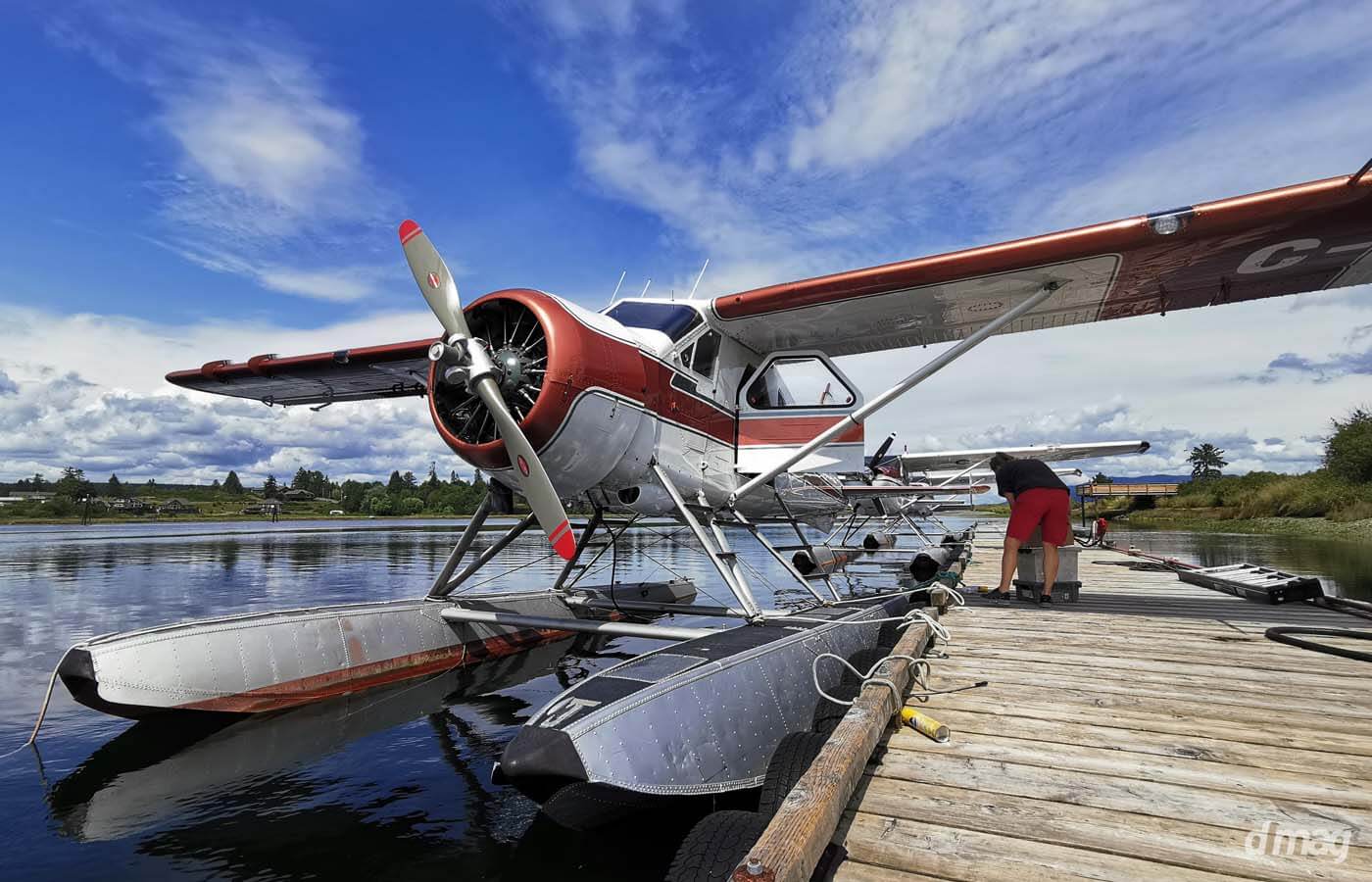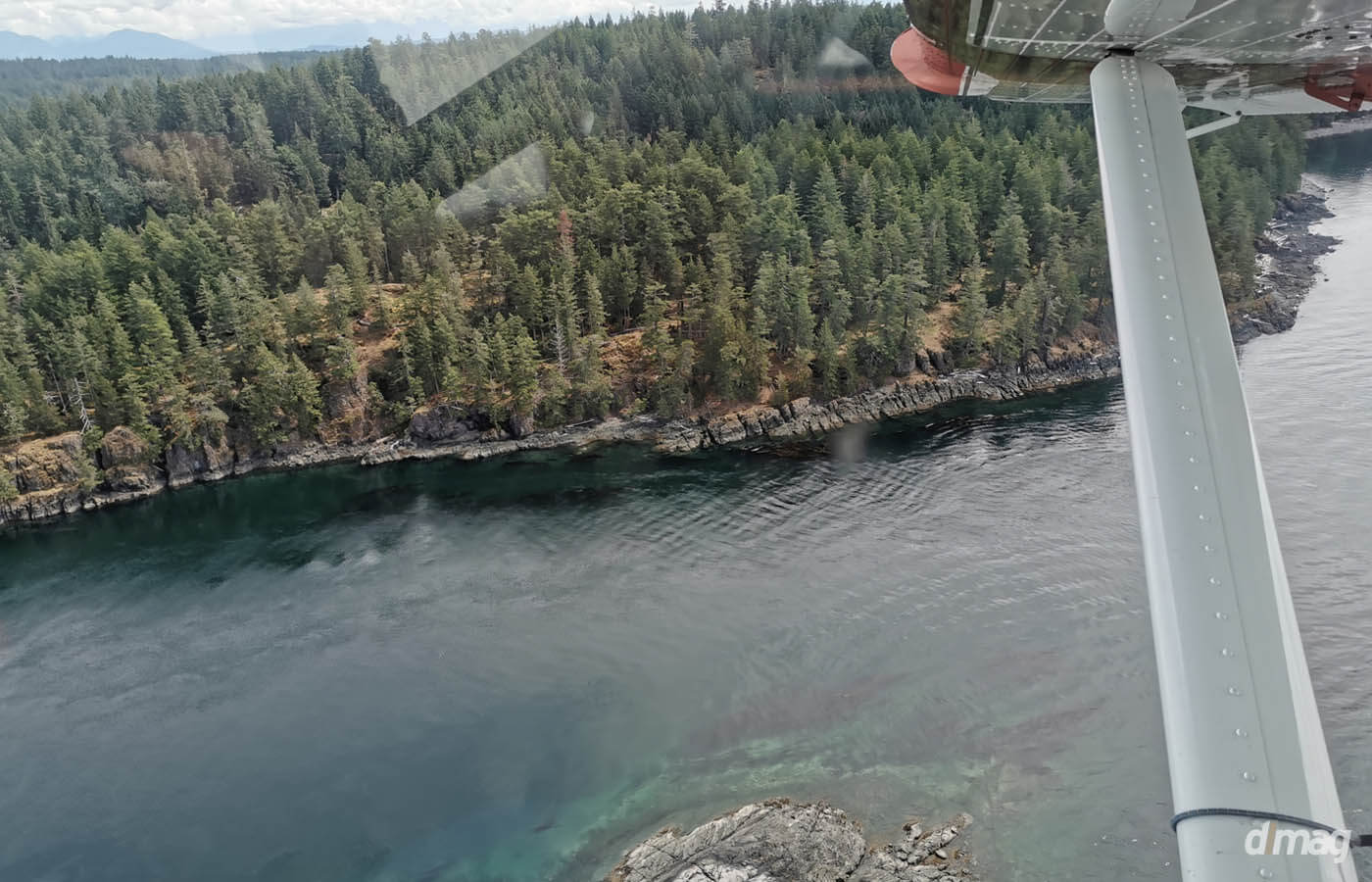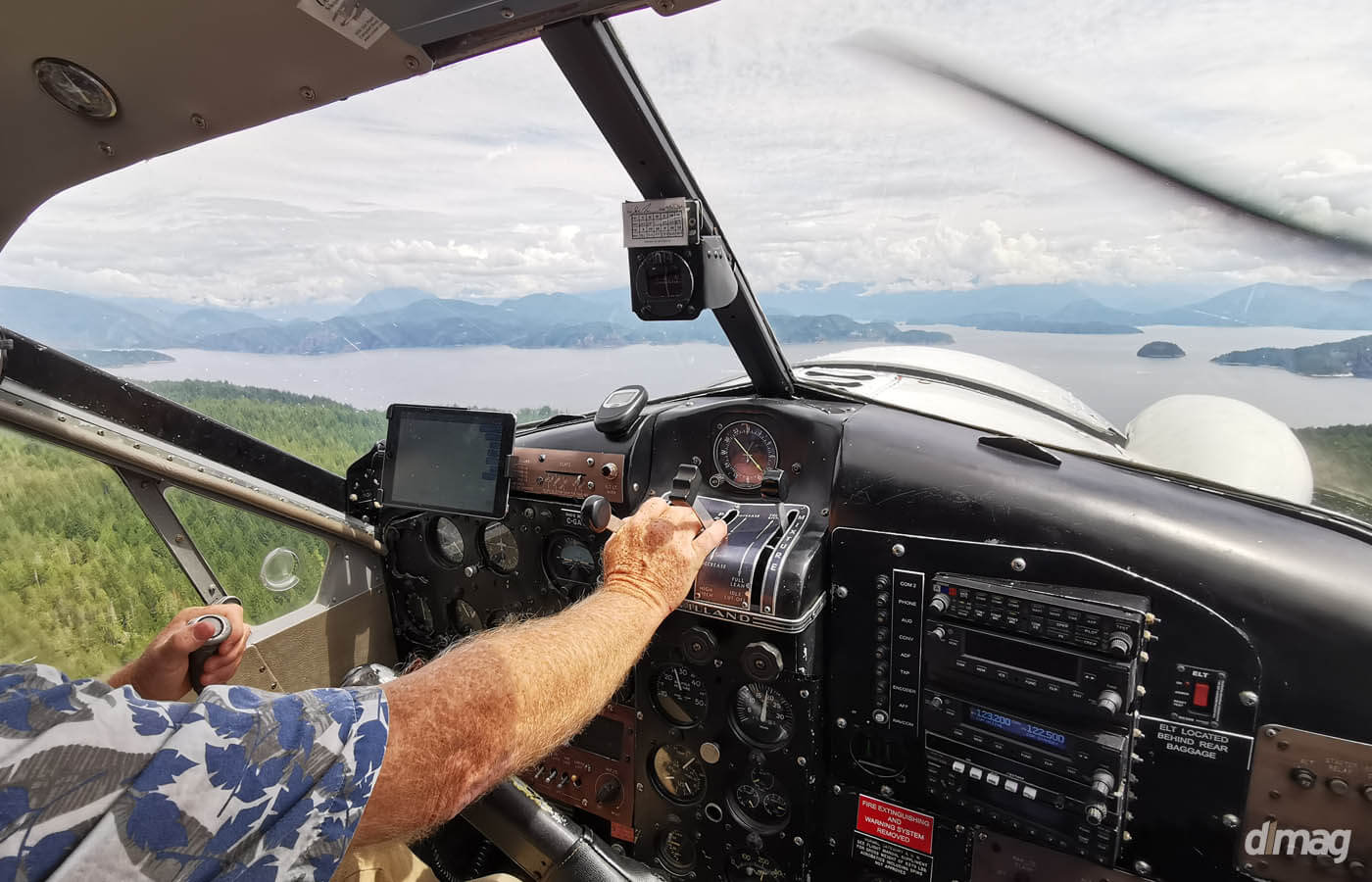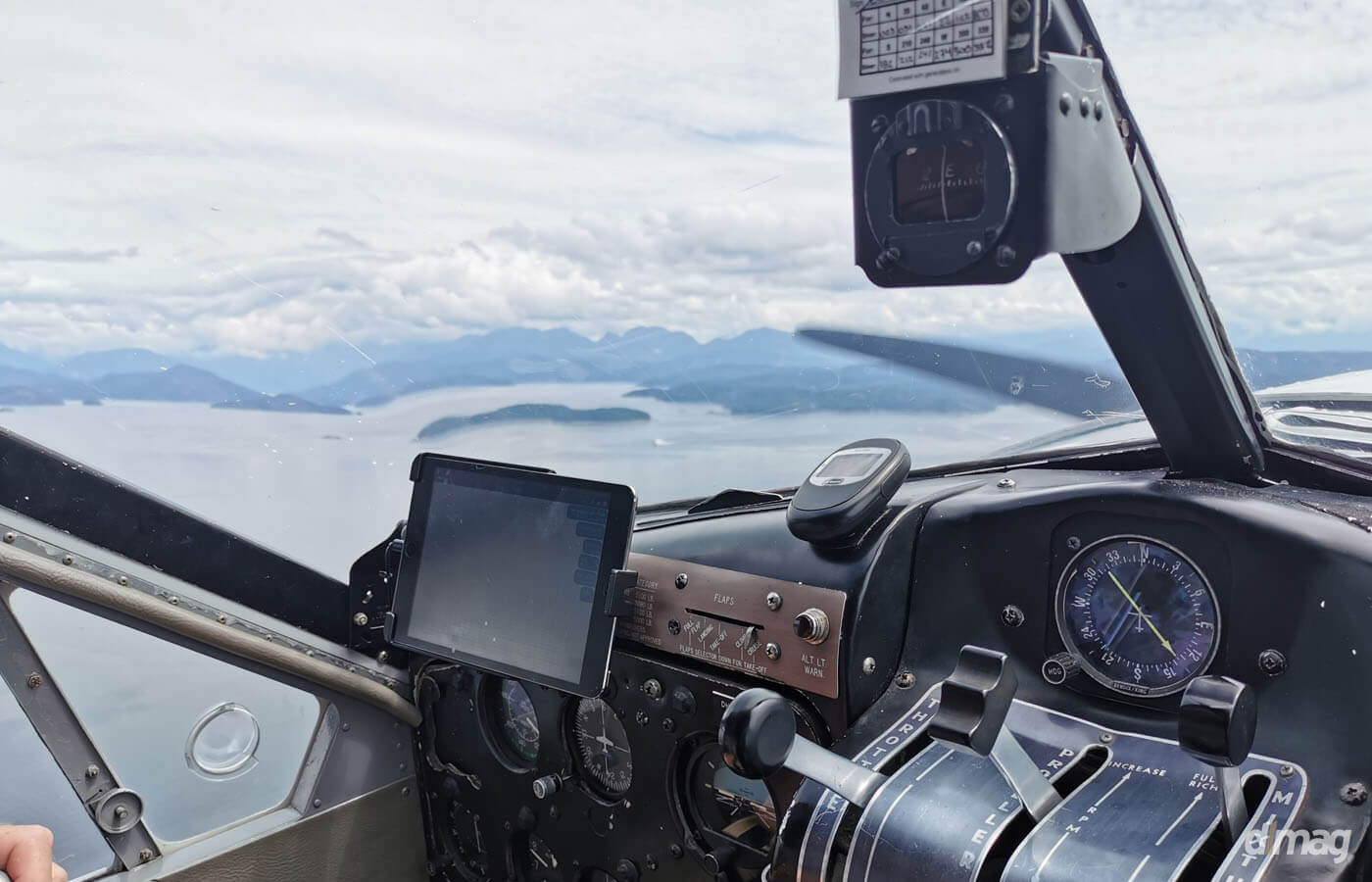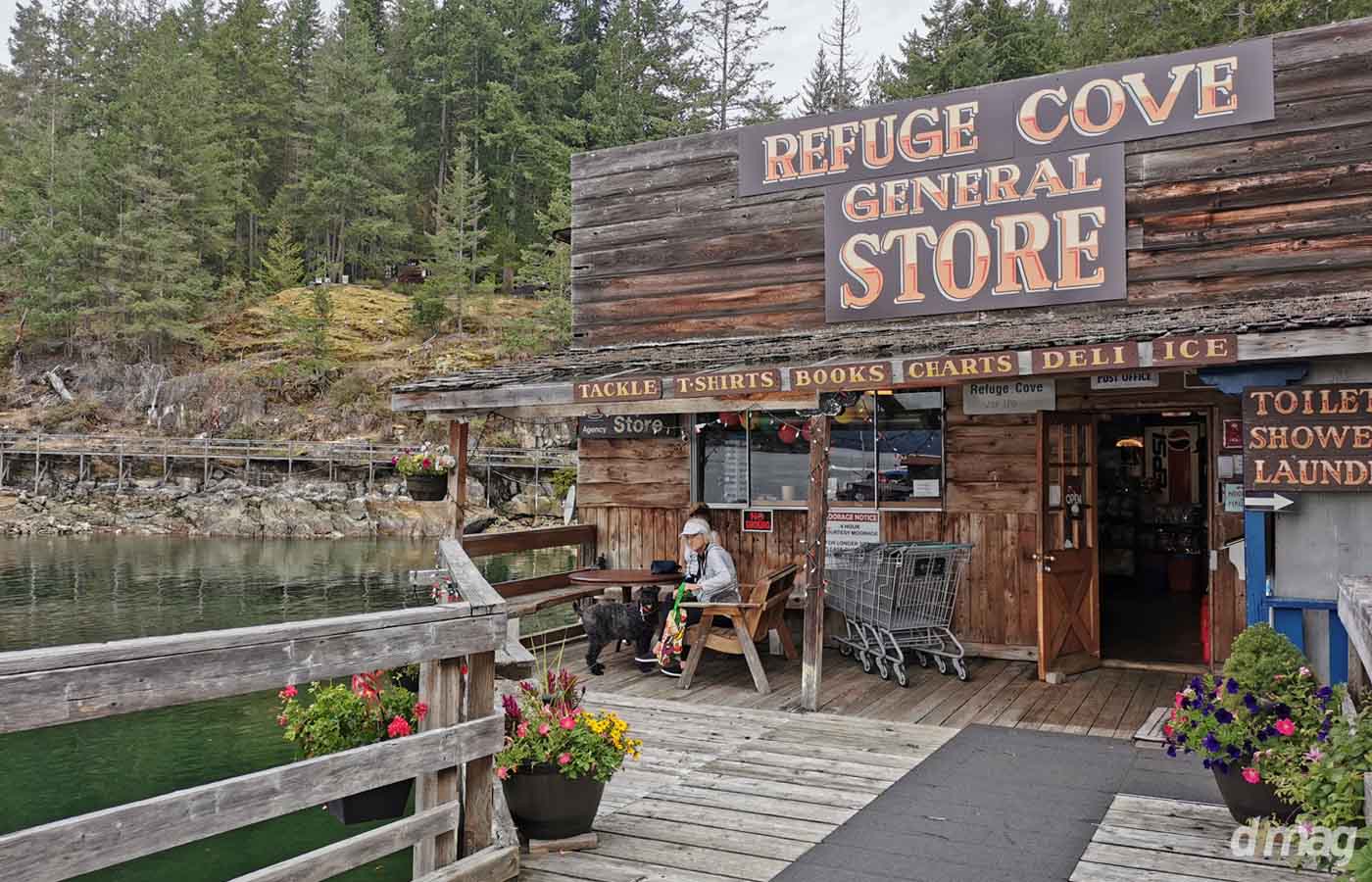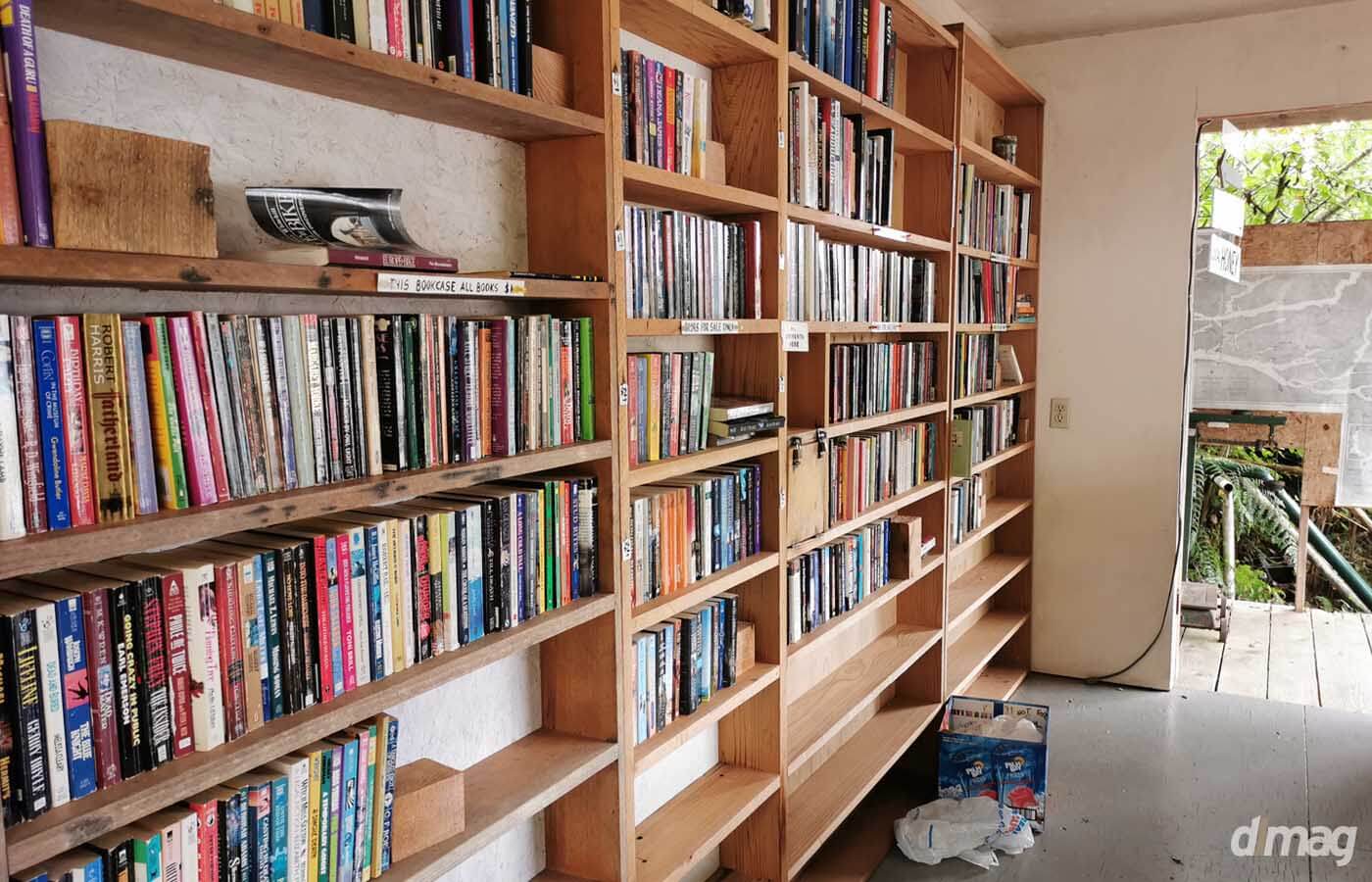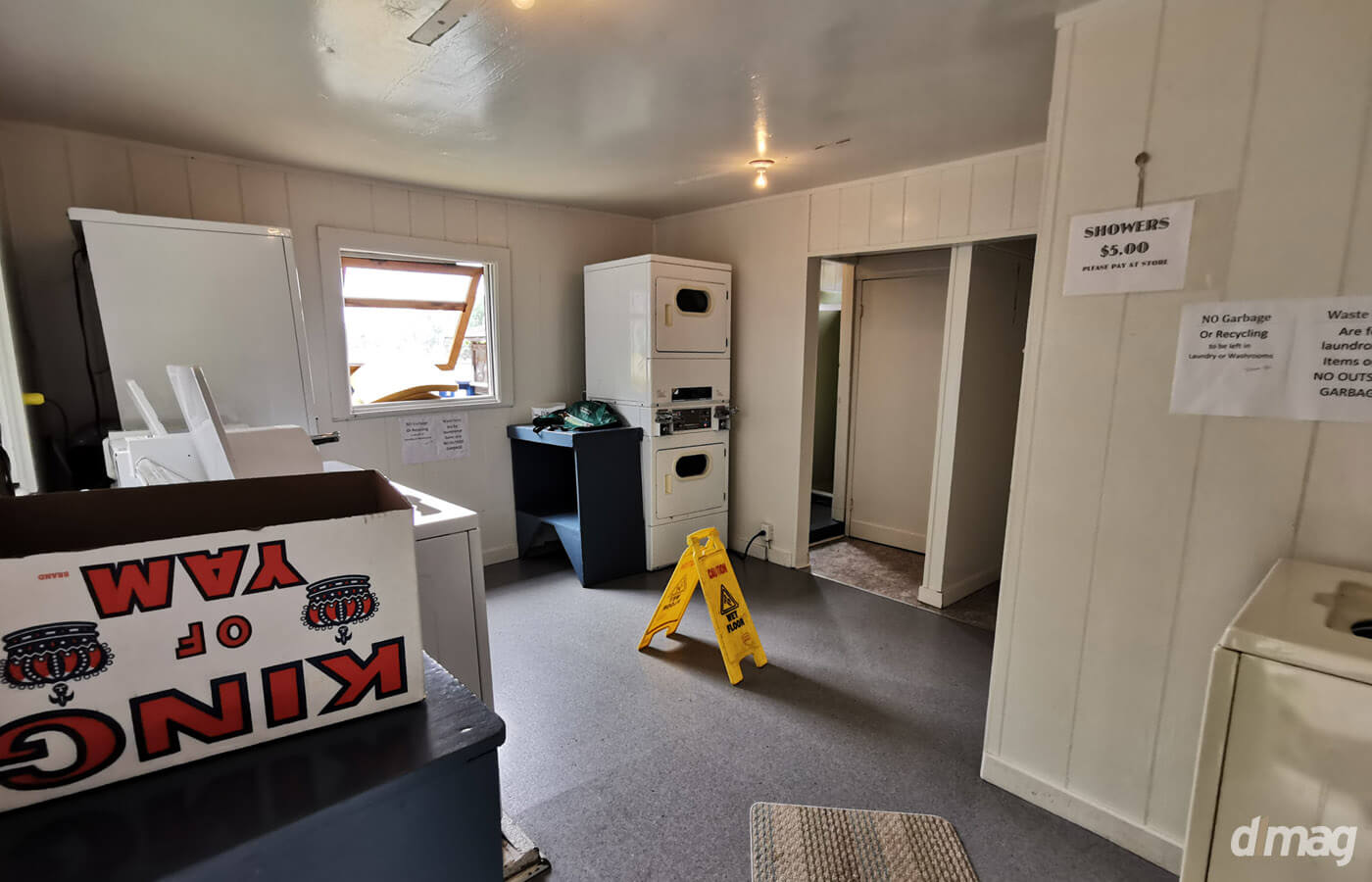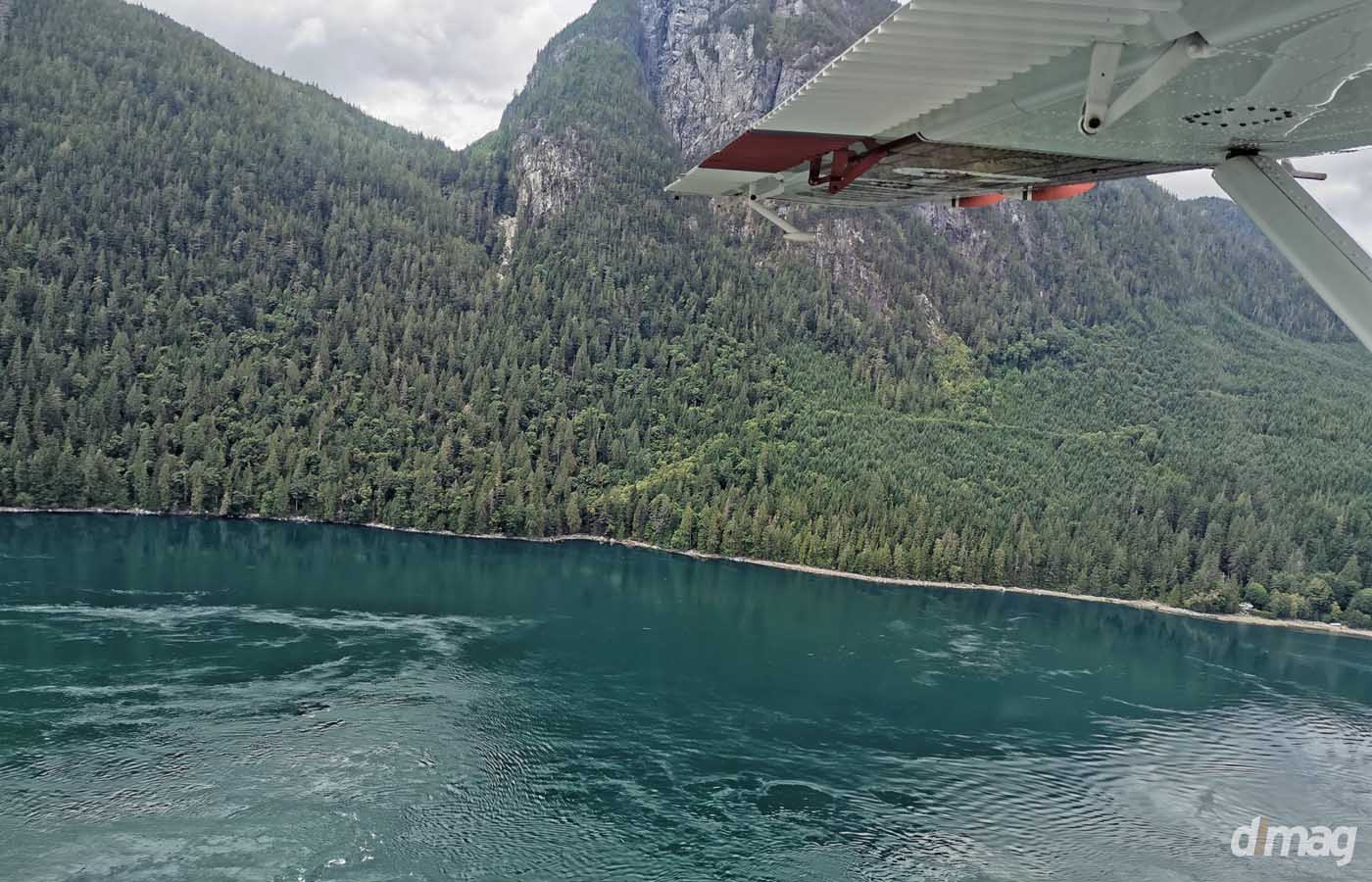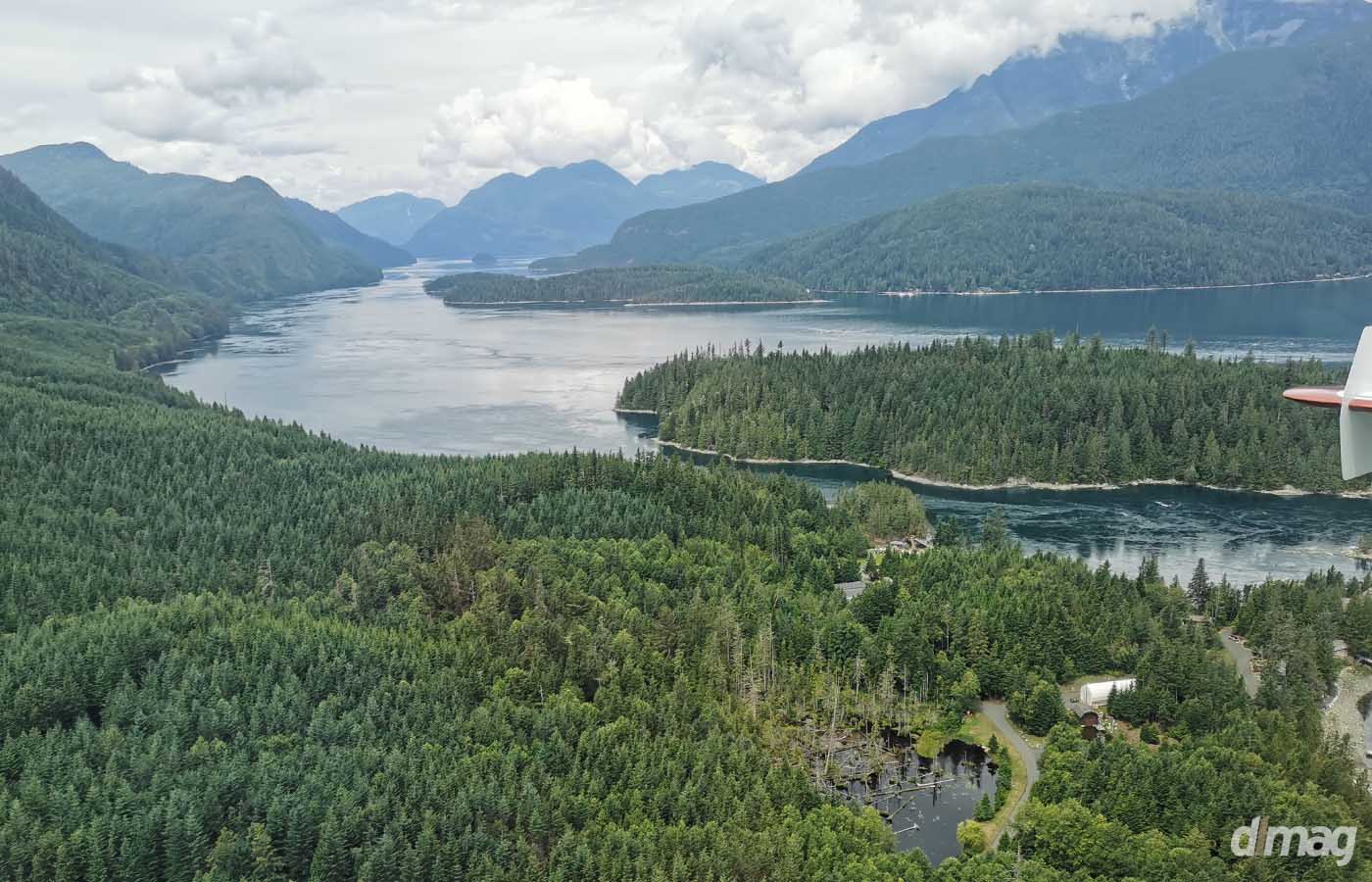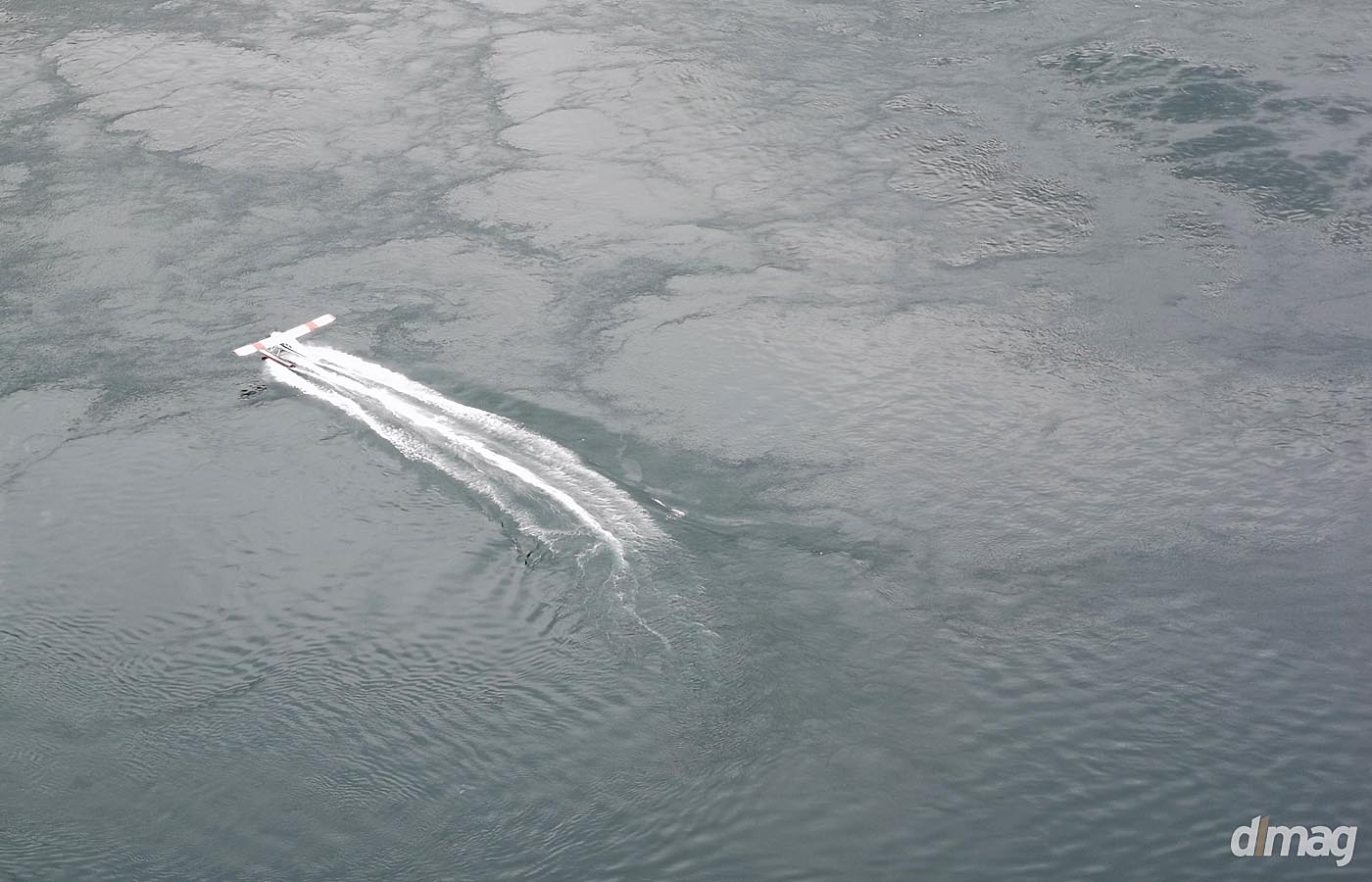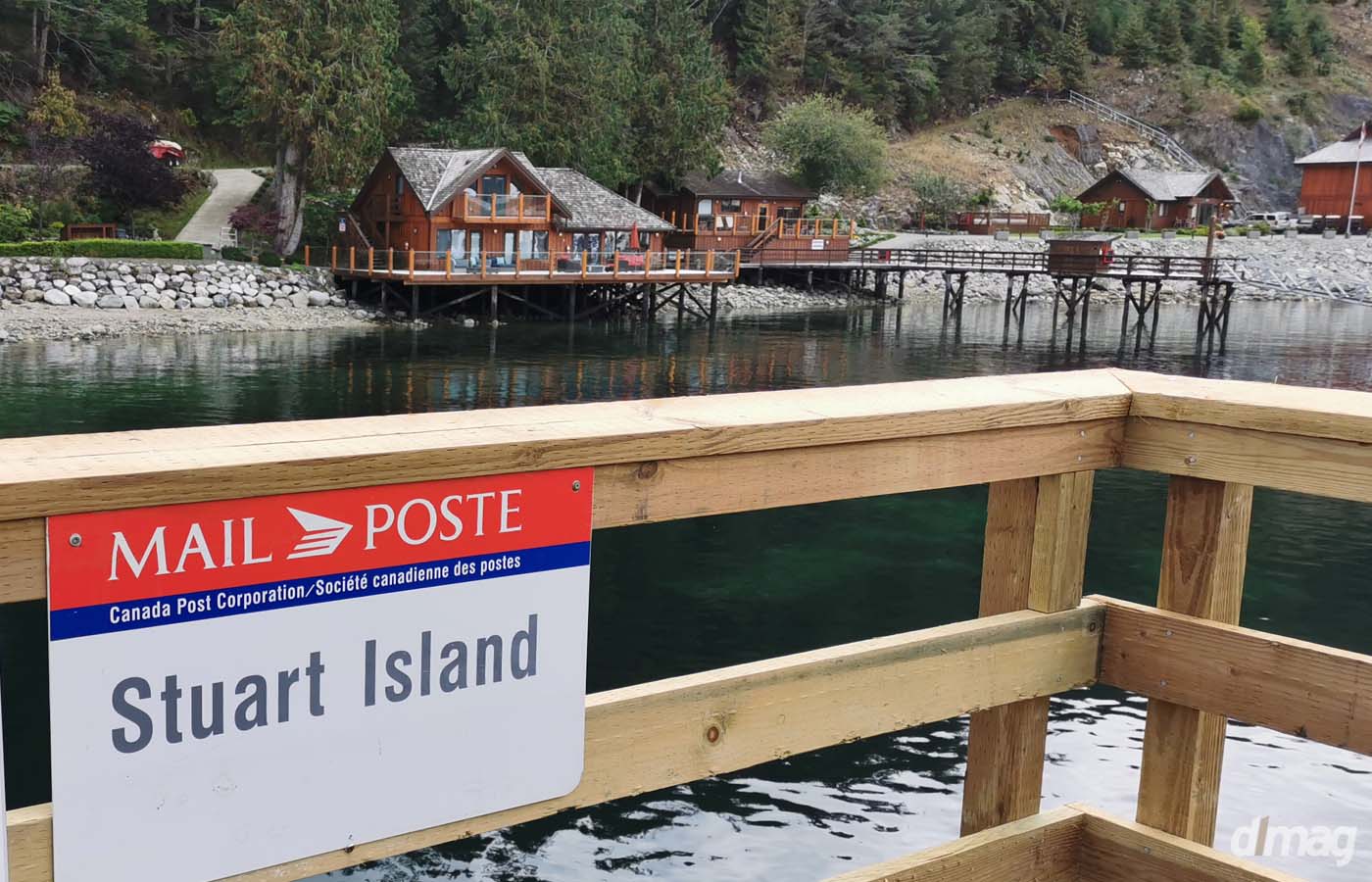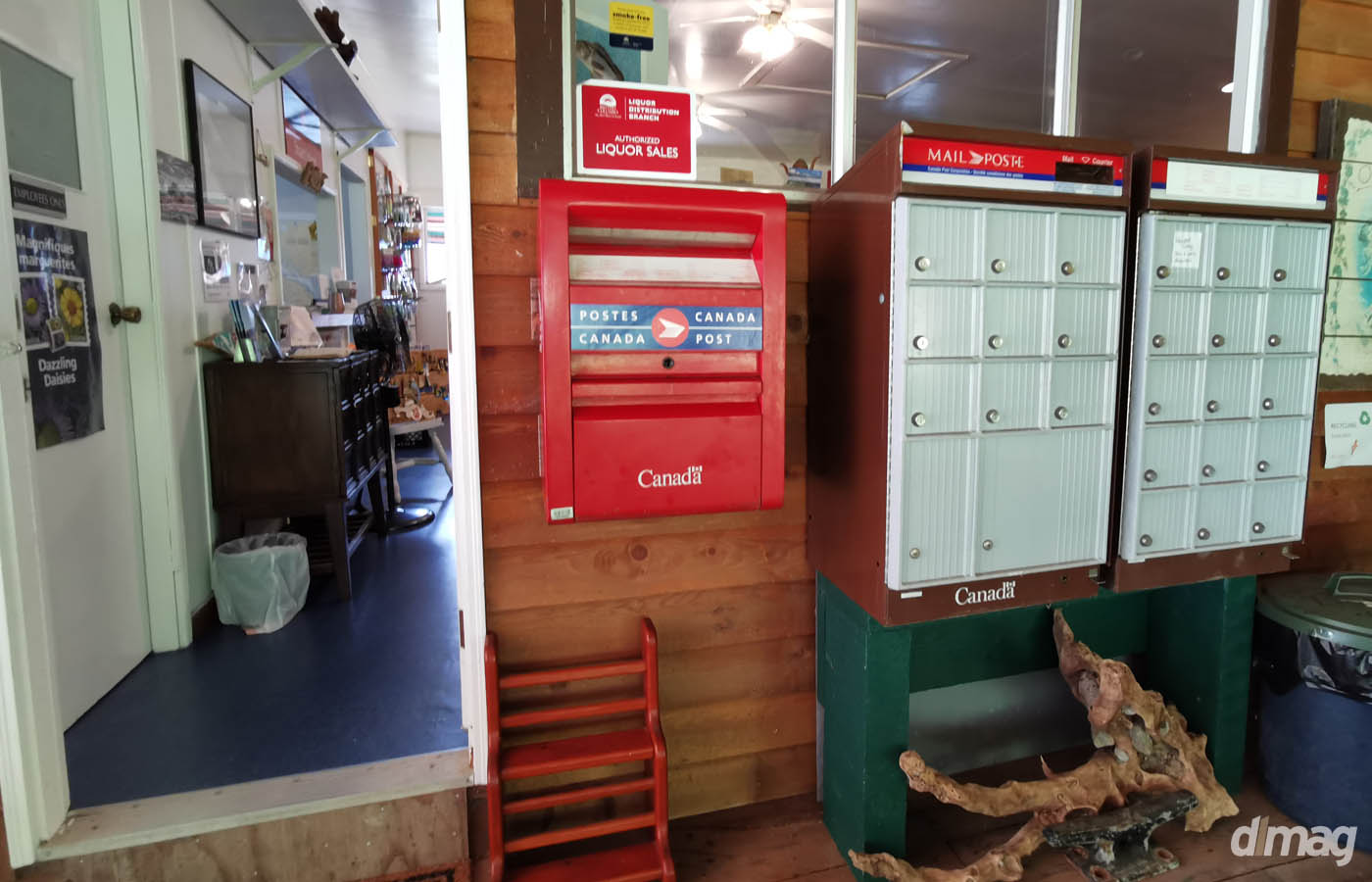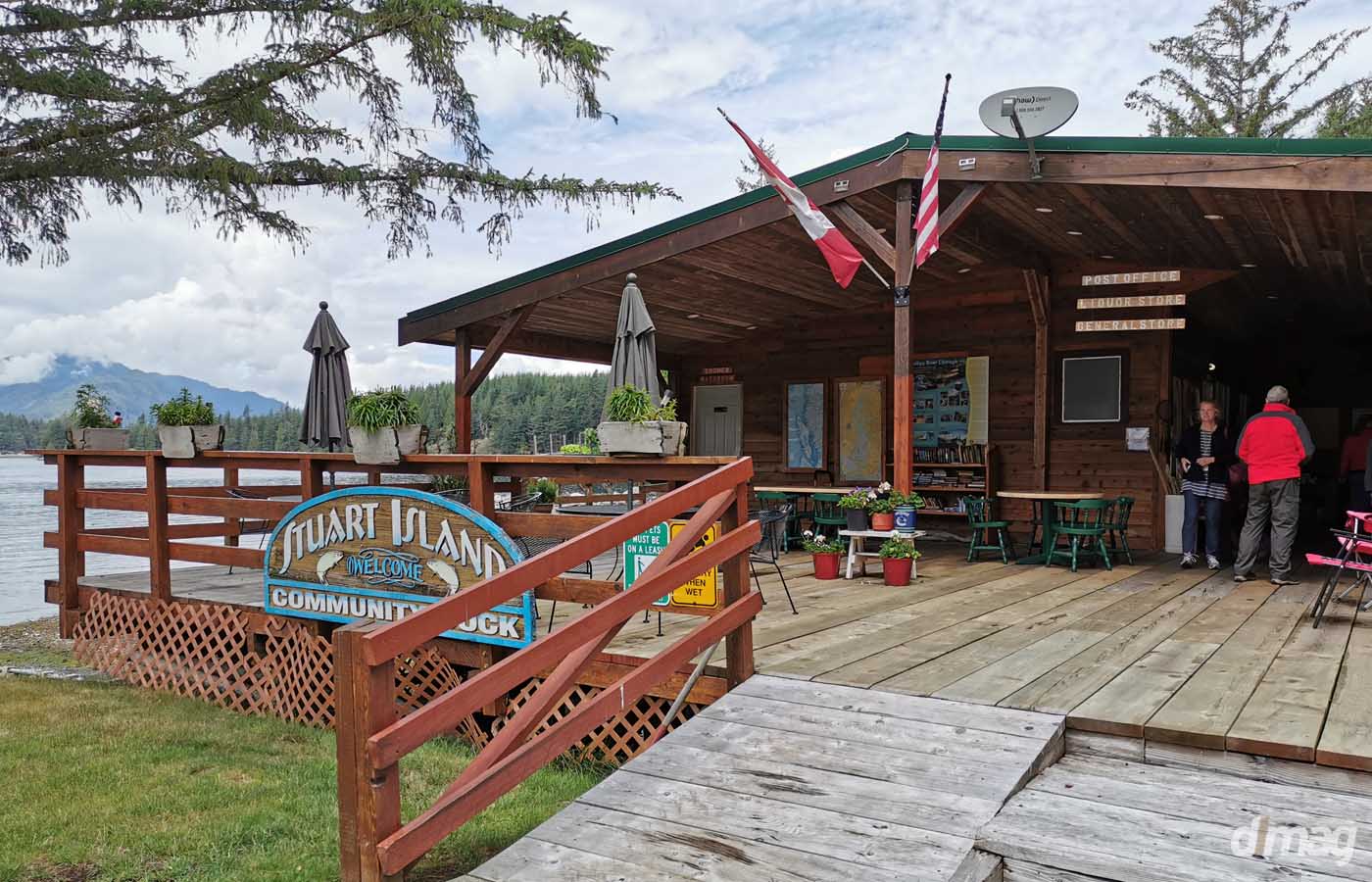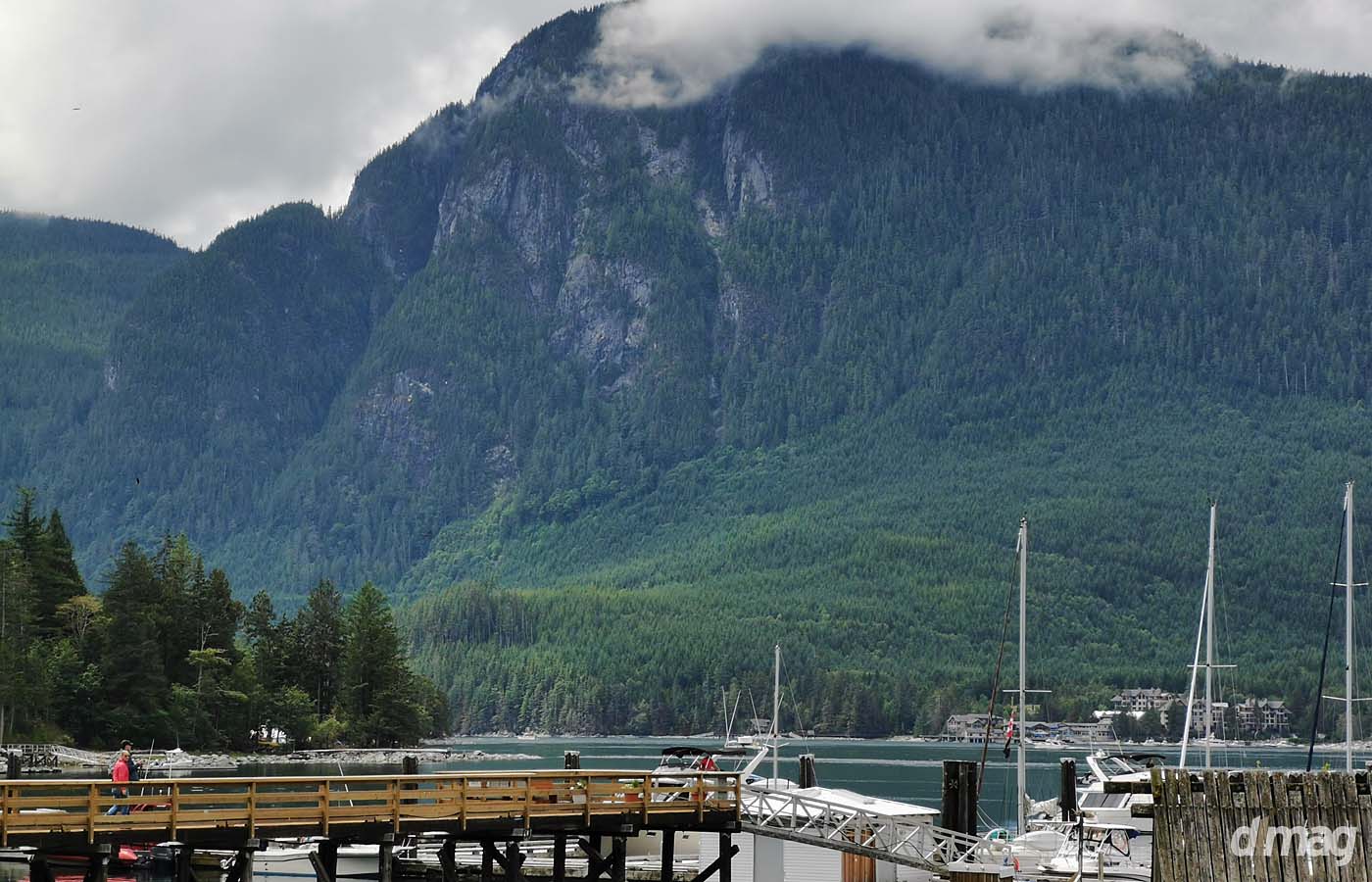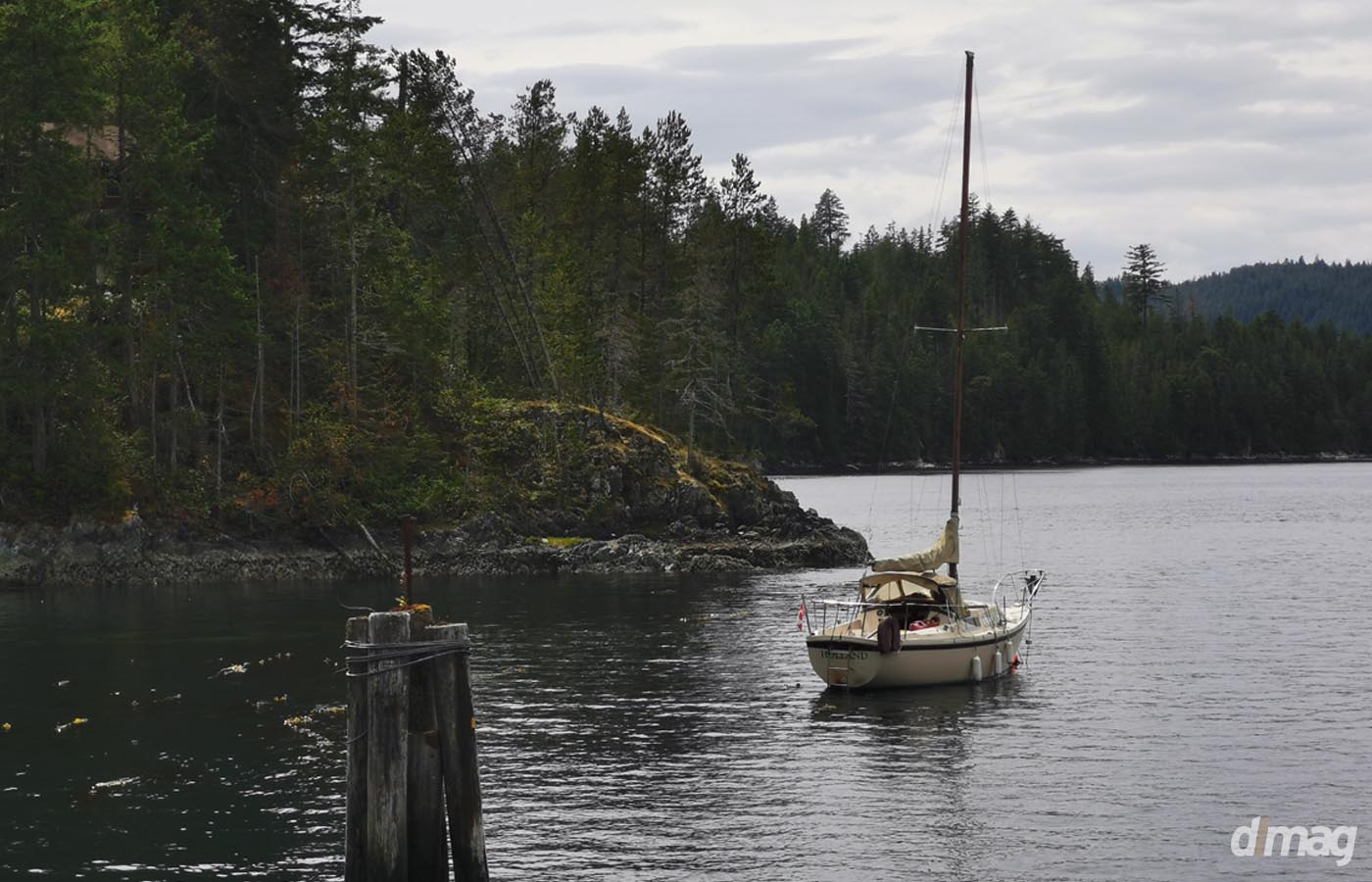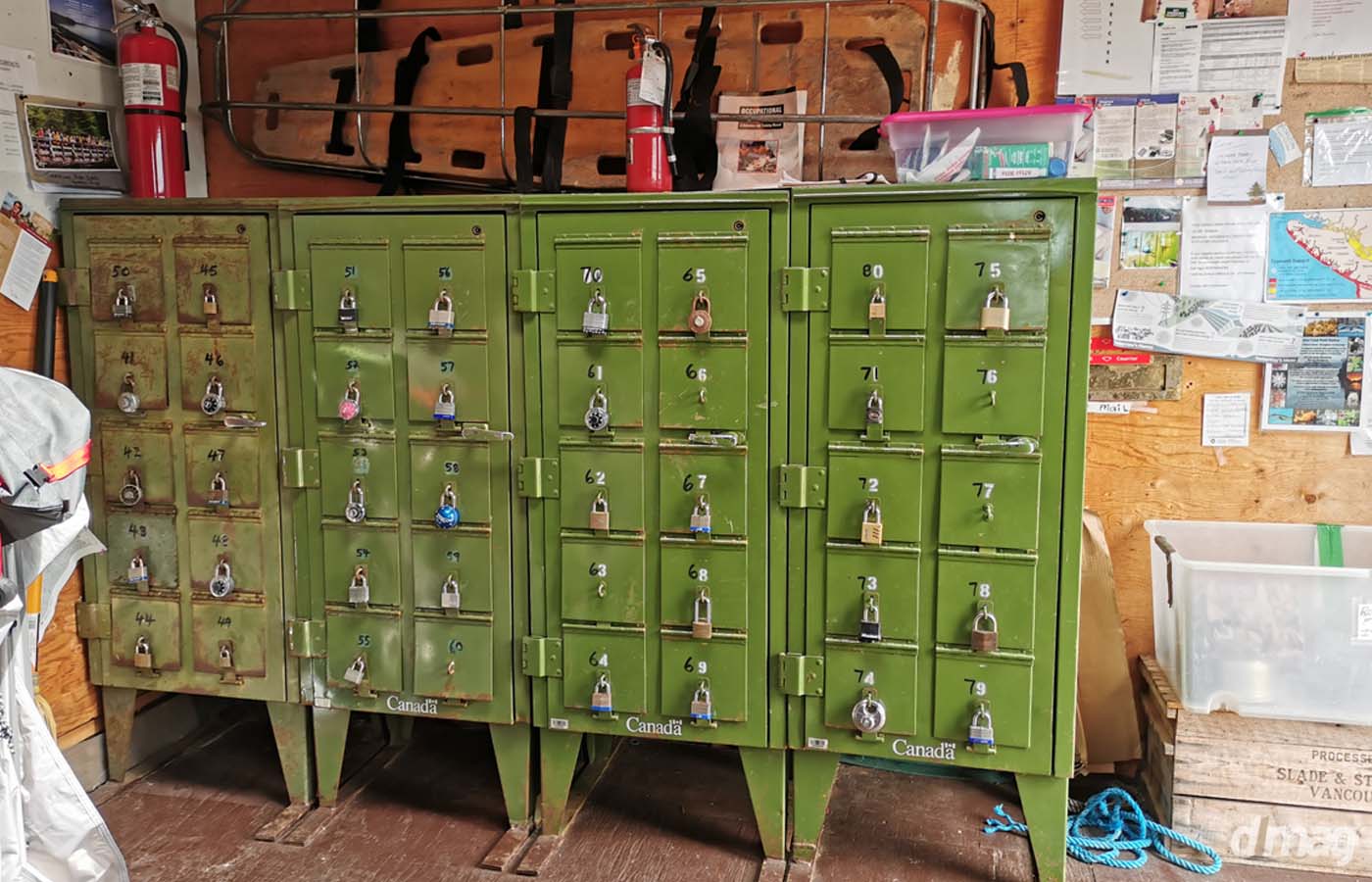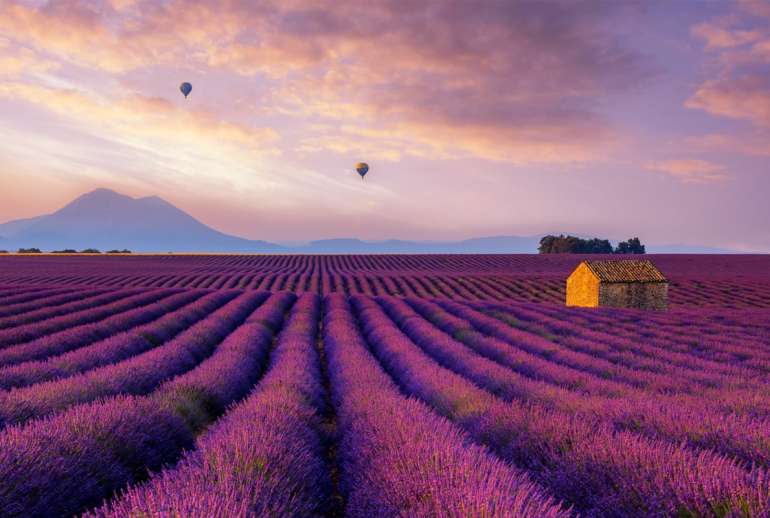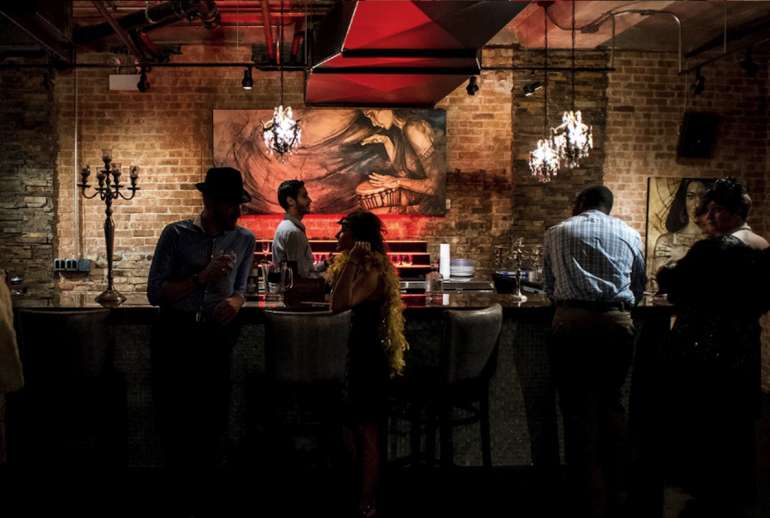Driving up to Corilair headquarters, one spies candy cane colored pontoon planes striped with red and white. They sit roped to the dock in an estuary that’s as picturesque as can be. I wasn’t about to climb onboard a float plane just for fun, but to accompany the pilot on his working mail run – a historic one at that. The Corilair mail run out of Cambell River, British Columbia is a flight that’s been operating for decades – delivering mail to residents in remote locations throughout the discovery islands. It has been listed as one of the top 5 Canadian adventures and the opportunity is there for you to go along for the ride.
You check in at the main desk of Corilair’s head office and are instructed to meet the pilot out back by the dock. The Corilair pilots are very experienced, the pilot that day had a flying career of 40 years with mail run experience since the early 90s. With the plane loaded up, he said, “okay, up you go now.”
A short climb up the ladder from the dock, and a wiggle into the De Havilland Beaver float plane, I found myself in the co-pilot seat and ready for action. “Buckle-up now he says, it’s time to go”, because the mail run departs 12:30 pm sharp on Monday, Wednesdays, and Fridays, all year round. Residents of the isolated islands between Vancouver Island and Canada’s mainland home are waiting for their part and parcels, and furnishing residents supplies they need (only accessible by sea or air) is critical.
After the pre-flight check, the pilot starts the Pratt and Whitney aircraft engine that purrs like a kitten once fired up. With the engine revved, the plane lurches forward through the coastal waters. And, then, with sufficient speed the plane lifts up in an unexpectedly gentle way.
We don’t climb that high and stay lower to the ground – or treetops I should say – you can look down and any wildlife within them can be easily observed. We’re going to be going up and down about five times, so there’s no reason to gain huge altitude on the run. As we climb, the pilot adjusts the instruments and calibrate everything with finesse, and the flight is nice and smooth. There’s very little civilization below, and its mostly just beautiful scenery of watery inlets, sprawling green forest, and mountains dotted with an occasional off-grid house here and there.
It’s time to make our first stop and mail delivery of the day, so the plane starts to descend. Once down, you’ll have about fifteen to twenty minutes to observe the delivery, mull about the docks, talk and interact with the locals, before needing to saddle up and fly on to the next location. Plan for the entire trip to take around three hours to complete.
First Stop – Manson’s Landing at Cortez Island

The first stop on the run is at Cortez Island. After landing on water, the pilot lassoes the plane to the dock like a true sky cowboy. The mail is transferred from the plane onto the wooden planks where someone from the general store/post office picks it up for distribution on the island. Cortes Island has the second largest residential population in the Discovery Islands, numbering just over 1,300 on a year-round basis. The island is known for its petroglyphs, made by the Coast Salish Indians. You can use your break onshore to hunt for ancient petroglyphs on rocks at the beach.
But don’t wander off too far because before you know it, it’s time to go. You can’t lead the pilot astray and get off track his delivery route. Remember, that your flight-seeing tour has a purpose and the serious mission … you certainly don’t want to be the object of intense scrutiny by holding up the mail!
Second Stop – West Verdona Island
As the pontoons skim the water’s surface the engine is cut and the propellers slow spin to a stop. We drift too quickly towards the town and miss the first attempt to dock. But never fear, as the second pass proves more successful as the pilot made a real effort to jump out and land both feet first to secure the Beaver.
West Verdona Island is a very cool place. Less than ten people live permanently in the small settlement of Refuge Cove – a place with a wild west-like feel and 100-percent authenticity – a delightful little place.
Sailboats were docked to restock before moving on to the next destination. A general store with a little bit of everything for sail – from fishing lures, hooks and bait to gourmet wines and cheeses. There’s even a pet path, library, bathhouse with showers, and a café upon the bluff. Refuge Cove is considered the gateway to Desolation Sound – a deep water sound with spectacular fjords, mountains, and wildlife – worth a destination trip of its own – and an excellent location for camping, paddling, kayaking, and boating. Another bonus is that Orcas are often found swimming in the waters here.
Third stop – Search Narrows, Reed Island
Reed Island has a history that’s tied to murder and mystery. A major center for logging and fishing back during the 1900s, a livelihood that made those that lived here rich and flush with cash and gold. Lawlessness reined at the time, that and high levels of alcohol consumption led to fighting, as one can imagine.
As a result, during the era, it was commonplace for people to disappear. And by the time it took police and authorities to reach the remote location – six to seven days – the majority of bodies were long gone and never found.
Fourth stop – Big Bay, Stuart Island
Property in this part of the world is very expensive And Stuart Island takes the cake one of the most expensive of them all. The few people lucky enough to call Stuart Island home just happen to be billionaires. The island is seclusive, gorgeous and looks like a slice of lush Jurassic park rainforest surrounded by ocean water with a turquoise hue from the glacier melt.
Stuart island became famous back in the 1950s for the exceptionally large Chinook salmon in the area. Word spread around the world of the hefty catch to be had here, bringing celebrities and Kings and Queens who wanted to try their hand at the incredible ocean angling of the area.
A small island lies just off Stuart Island’s shore and is home bald eagles and Stellar Sea Lions. You’ll see the eagles cruising by on airways parallel to the coast with wingspans up to 8 feet long, the sight of them is utterly impressive.
Fifth stop – Surge Narrows, Quadra Island
Surge Narrows on Quadra Island is definitely off the beaten path. It’s a very unique destination with fantastic hiking. There is not much there nor many people, and it is very peaceful, quiet, and full of giant trees and prehistoric ferns. The island gets its name from the fact that it forms part of a group of small islands just off Quadra. A small channel between the islands is filled with ocean water. As the tide goes in and out throughout the day, the water surges through this channel creating some serious river-like rapids.
The historic mail run flight is highly recommended. The stunning scenery and the chance to travel by sea plane with take-offs and water landings is an absolutely unforgettable experience. The trip route may vary somewhat depending on the weather.
Reservations are required in advance through the Corilair center. It’s a good way to spend $200 USD (approximately) since you’re certain to enjoy every minute, not to mention the colorful cast of Canadian characters you’ll meet throughout as well. Time really flies on this fun trip so have fun! Corilair can also be chartered for other adventures in the bush.

